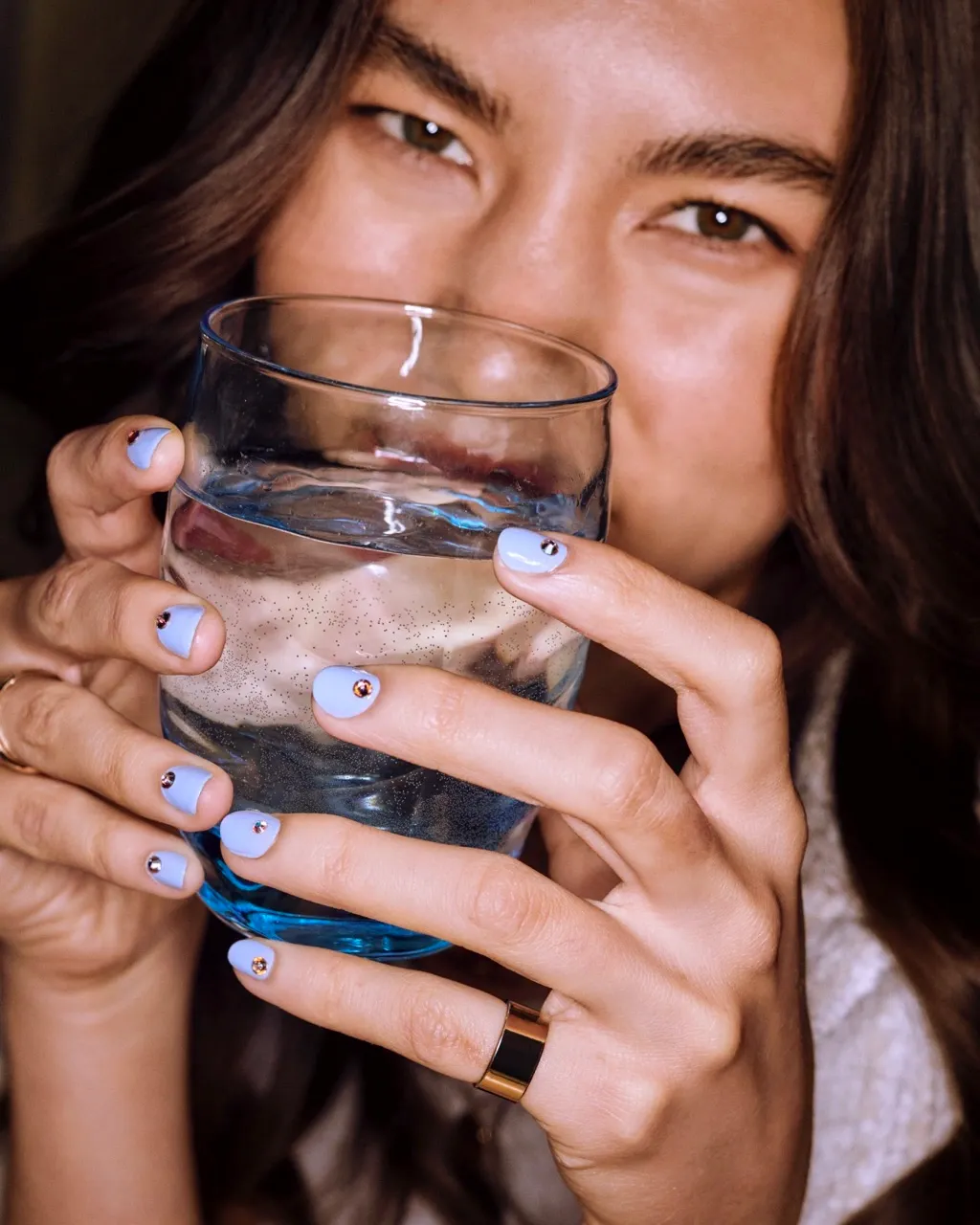Many people see manicures as purely cosmetic, but there's a strong link between nail care and overall nail health. A well-performed manicure for healthy nails can actually improve the condition of your nails by keeping them groomed and preventing issues, whereas improper techniques might do more harm than good. Nails are made of keratin, and they can reflect your general health. Strong, smooth nails often signal good care and nutrition, while brittle or discolored nails may indicate problems. In this article, we’ll explore the benefits of manicures beyond just beauty and offer practical tips to maintain robust, healthy nails through proper care routines.
Benefits of Manicures for Nail Health
Manicures can actively contribute to nail health when done correctly. Regular professional or at-home nail care offers several advantages. Routine manicures keep your nails clean and trimmed, which helps prevent dirt and bacteria from accumulating. This nail care routine of cleansing and shaping reduces the chance of infections and issues like hangnails or ingrown nails. Manicures typically involve moisturizing the nails and cuticles, improving circulation in the fingers through gentle massage, and exfoliating dead skin around the nail bed. All of these steps can lead to healthier skin and nails over time.
Another key benefit is that manicures can strengthen your nails and guard against fungal infections. Regular manicures can reduce the risk of developing nail fungi and other infections, and the exfoliation during the process encourages new cell growth for stronger, healthier nails. Keeping up with nail maintenance can make your nails more resilient. Additionally, manicures often include a hand massage, which promotes blood circulation. Improved blood flow can help deliver nutrients to the nail matrix, potentially supporting healthier nail growth. Taking time to care for your nails or enjoying a relaxing salon manicure can reduce stress and indirectly benefit your overall health.

Essential Nail Care Routine for Healthy Nails
One of the keys to maintaining healthy nails is having a consistent nail care routine. Healthy nails don’t just happen by chance. They result from good daily habits that keep your nails clean, moisturized, and protected. Here are some fundamental elements of a nail care routine that will support nail health:
- Keep nails clean and dry: Hygiene is crucial. Wash your hands regularly and keep your fingernails free of dirt. Always dry your hands and nails thoroughly after washing or bathing, because bacteria and fungi thrive in moisture. By maintaining clean, dry nails, you prevent bacteria from growing underneath and causing infections.
- Trim and file nails properly: Regular trimming prevents nails from snagging or breaking. Use sharp manicure clippers or scissors to cut your nails straight across, then gently round the corners with a file. Trimming straight across helps prevent ingrown nails, and a gentle curve at the tip mimics your finger shape while providing the nail with some strength. When filing, do so in one direction to prevent splitting. Keeping nails at a moderate length is usually best. Very long nails are more prone to cracking or tearing.
- Moisturize nails and cuticles: Just like skin, nails can become dry and brittle if they lack moisture. Rub a lotion or hand cream into your nails and cuticles each day. You can also use natural oils on the nails and cuticle area. This keeps the nail plate flexible and the cuticles healthy, which in turn helps new nail growth at the base. Well-moisturized cuticles also act as a barrier to keep germs out.
- Protect your nails from chemicals and water: Limit your exposure to harsh cleaning agents or overly strong nail products. If you use household cleaners, wear gloves so chemicals don’t weaken your nails. Likewise, try to use acetone-free nail polish removers when possible, as acetone can overly dry out your nails and skin. When doing chores that involve prolonged water exposure or contact with detergents, wear rubber gloves to shield your nails. These measures prevent nails from softening or splitting due to excessive water or chemical contact.
- Don’t bite or pick at nails and cuticles: Biting nails or picking at your cuticle skin can damage the nail bed and the protective cuticle. Even a small cut or opening can let bacteria in and lead to infection or inflammation around the nail. If you have hangnails, clip them carefully with clean nail clippers instead of pulling them out.
By incorporating these steps into your daily and weekly routines, you can develop a nail care regimen geared toward maintaining healthy nails. The routine can be simple: keep them clean, trim them regularly, moisturize, and be gentle with your nails.
Healthy Nail Tips: How to Keep Nails Strong and Prevent Breakage
Many people ask how to keep nails strong and how to prevent nail breakage despite daily wear and tear. The good news is that there are several practical strategies you can follow to strengthen your nails and minimize breakage. Below are some crucial tips for stronger nails:
- Keep nails at a practical length: Long, dramatic nails can be beautiful, but they are also more vulnerable to damage. Shorter nails are less likely to split or snag in everyday activities, so consider a moderate length for durability. Shorter nails are less likely to become damaged or broken during routine tasks.
- Use nail-strengthening products wisely: If your nails are especially weak, you might try a nail hardener or strengthener as a nail treatment. There are clear nail polish-like products that add a protective layer to the nail. However, use these sparingly, as some contain formaldehyde or other chemicals that can cause brittleness with overuse. It’s best to choose products specifically labeled for natural nail care and follow the instructions carefully, or consult a dermatologist for personalized recommendations. Nutritional supplements like biotin (a B-vitamin) can help strengthen brittle nails over time, so you can talk to a healthcare provider about whether a biotin supplement is appropriate for you.
- Be gentle: One of the simplest nail health tips is to stop using your nails in place of tools. Using your fingernails to tear open packages, peel off stickers, or pry things can easily lead to breaks or painful nail injuries. Instead, use scissors, a knife, or another implement for those jobs, and use the pads of your fingers when you need to scrape or pick at something.
- Limit harsh manicures and gels: Frequent use of acrylic nails or gel polish can weaken your natural nails over time due to the strong chemicals and curing processes involved. If you love gel manicures, try not to apply them back-to-back continuously. Taking periodic breaks from gels or acrylics will give your natural nails time to recover and stay strong.
Remember that consistency and care are important: treat your nails kindly, keep them protected, and they will reward you by growing harder and less prone to splitting.

Professional Manicures vs. DIY: Choosing a Luxury Manicure Service
There’s nothing quite like the pampering of a salon manicure, but many people also successfully maintain their nails at home. So, how do you decide between doing it yourself or opting for a professional touch? Visiting a salon or using a professional manicure service can offer expertise and a relaxing experience, whereas DIY manicures allow you to take control and save money.
Professional nail technicians are trained in nail care. They know how to shape nails correctly, how to properly handle cuticles, and how to apply polish smoothly. If you visit a high-quality spa or book a service like Glamsquad (which provides in-home beauty services), you’re likely to get not only a beautiful look but also careful treatment of your nails. Professionals can also assess your nails and suggest treatments if they notice issues like weakness or nail ridges, and they have access to salon-grade products. One major advantage of a good professional service is the emphasis on cleanliness. At home, you’ll need to sterilize your tools to prevent accidentally causing an infection. Any reputable professional manicure service should use properly sterilized tools and have licensed technicians, practices that help avoid infections during a manicure.
Gel Polish: Balancing Beauty and Nail Health
Gel polish manicures have surged in popularity because they offer incredible shine and can last two weeks or more without chipping. However, it’s essential to balance the beauty benefits of gel nails with potential impacts on nail health. Gel manicures require special care both in application and removal to keep your natural nails in good condition. The main appeal of gel polish is its durability. The gel formula is cured under a UV or LED lamp, creating a hard, glossy coat that’s more resistant to scratches than regular nail polish. This means you can enjoy chip-free nails for a longer period. Gel polish is also instantly dry after curing, so you can finish your manicure without worrying about smudges.
Best Practices for Nail Polish Application, Cuticle Care, and Trim
Even if you follow all the proper steps for strengthening your nails, how you groom and polish them can make a big difference in nail health. Two critical aspects of this are proper application, cuticle care, and trimming. Let’s break down some best practices for each, so you can have a great manicure without sacrificing nail health. A few simple habits can protect your nails when you’re wearing polish:
- Use a base coat and top coat: Always start with a base coat and finish with a top coat when painting your nails. A base coat creates a protective barrier on the nail surface, helping the color adhere better and preventing pigments from staining your nails. A top coat seals in your polish, adds shine, and provides an extra layer that reduces chipping. Using both will make your manicure last longer and spare your nails from frequent re-polishing.
- Be careful with nail polish remover: When it’s time to change colors, use a gentle touch. Choose an acetone-free remover whenever possible, or if using acetone for stubborn polish, try the foil method instead of scrubbing. Overusing strong removers can severely dry out your nails and cuticles, so use them sparingly and moisturize your nails after removal.
- Don’t cut your cuticles: It might seem neat to trim away the cuticle, but dermatologists strongly advise against cutting it. Cutting this protective skin can create an entryway for bacteria or fungi, increasing the risk of painful infections around the nail. Instead of cutting, simply push the cuticle back if needed.
Make these best practices your routine, and you’ll find your nails not only look salon-perfect but also stay healthy beneath the paint.

Remember that maintaining nail health is an ongoing process. Your nails grow and change with time, so keep an eye on them and adjust your routine as needed. If you notice any persistent problems with your nails, consult a healthcare provider. Nails can sometimes signal underlying health issues that need attention. Healthy nails are a reflection of good self-care. Whether you’re treating yourself to a professional manicure or tending to your nails at home, the effort you put into maintaining healthy nails will show. So go ahead and indulge in that new nail color or treatment, confident that with the right habits, you’re supporting the long-term health of your nails. With a little TLC and smart practices, you can keep your nails strong and smooth.
Sources
- aad.org American Academy of Dermatology – 11 dermatologists’ tips for healthy nails (advice on keeping nails clean, dry, and hygienic)
- medicalnewstoday.com Medical News Today – How to strengthen nails: 13 tips and tricks (why shorter nails are less prone to breakage)
- healthline.com Healthline – What Is a Cuticle and How Can You Safely Care for It? (guidelines for choosing licensed salons and sterilized tools for nail services)
- aad.org American Academy of Dermatology – Gel manicures: Tips for healthy nails (dermatologist warning about gel polish causing nail brittleness and skin risks)
- mayoclinic.org Mayo Clinic – Fingernails: Do’s and don’ts for healthy nails (recommendation of biotin supplements for strengthening brittle nails)
- healthcare.utah.edu University of Utah Health – The Danger of Cutting Your Cuticles (dermatologist insight on how cutting cuticles increases infection risk)

